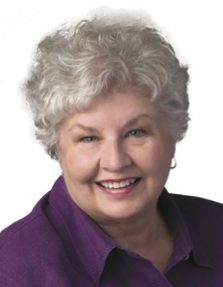
12 Jun 2013 The unseen heroes
by Vivian Lawson Hogue
It is not difficult to find people who have displayed extraordinary valor at least once in their lives. Some are close to you; some you only see in headlines.
Perhaps even your own life or predicament depended on them. In thinking of someone you greatly admire or owe gratitude, think closer than a news item.
A person such as this might also be described as “courageous,” “strong,” a “fighter” or “protector.” Often called a “hero,” this person could simply be one who overcame circumstances from which ordinary people would run. A “role model” is not necessarily a “hero” and vice versa, but there are more of both than one would think.
In our own county history, we find many forebears who left other states or countries to settle here, usually in situations of adversity. They came to escape from illness, a broken romance, crop failures, political upheaval or religious prejudice. Some spoke foreign languages at home but spoke and required children to speak English elsewhere.
Some were educated and others were illiterate. Many survived trips by ship, wagon, horseback or all three. They brought children with them, and some brought a cow so they could have milk. When a man’s wife died following childbirth, it was understandable that he would seek another wife soon because he could not work and take care of children.
We tend to think of “heroes” as men, but when our country was less than a mere 100 years old, it was women and children who kept the home fires burning. Let’s look at “Margaret.”
Margaret and her husband, Thomas, settled in Faulkner County and homesteaded in 1881. Married in her teens, she had her first child at 20. The complete list of their children’s birth years started in 1864 and continued with ’67, ’68, ’70, ’73, ’75, ’76, ’77, ’79, ’80, ’82, ’87 and ’92, at which point Margaret was 48 and tuckered out. Through it all she may have gone to the outhouse now and then to cry in peace and quiet, but she overcame a hard life by courageous determination, strength and commitment. She even outlived her husband by two years.
Then there was “Lillian,” a young girl of 14. Her parents had settled in Conway in the 1870s and had seven children, of which Lillian was the eldest. One child had died earlier; then her mother died, leaving the homemaking and child-raising duties in Lillian’s responsible and caring hands. She managed to convince her father that she should leave the ninth grade to take care of the children. Had she not done so, the children would be divided and raised in other households. Lillian sacrificed her youth to be a hero, a role model and protector.
The common word that describes heroes and role models is “sacrificial.” A hero sacrifices a segment of his life and energy for another’s life or circumstance. A role model sacrifices what he could be for what he believes he should be in order to demonstrate character. In times past, it took a lot of both to sustain families and communities.
The next time we see an old photograph with an unsmiling ancestor, we must consider the circumstances because, after all, we are the future for which they persevered.
A native of Conway, Vivian Lawson Hogue graduated from the University of Central Arkansas with a degree in art education. A retired teacher, she worked in the Conway School District for 23 years. She is editor of the Faulkner County Historical Society’s semi-annual publication, “Faulkner Facts and Fiddlings.” She can be reached at [email protected].









